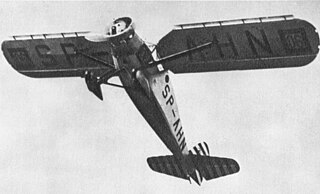
The RWD 6 was a Polish sports plane of 1932, constructed by the RWD team. It was a winner of the Challenge 1932 international tourist aircraft contest.
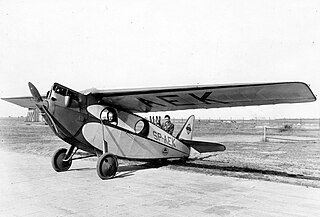
The RWD 4 was a Polish sports plane of 1930, constructed by the RWD team.

The RWD 2 was a 1929 Polish single-engine high-wing monoplane sports plane constructed by the RWD team.
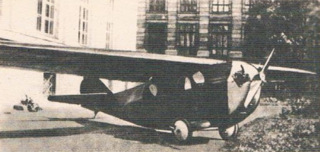
The RWD 1 was a Polish sports plane of 1928, a single-engine high-wing monoplane constructed by the RWD design team.

The RWD-10 was a Polish aerobatics sports plane, single-seat parasol wing monoplane, used from 1933 to 1939 and constructed by the RWD team.

The Lublin R-X was a Polish single-engined, two seat liaison aircraft, built in 1929 in the Plage i Laśkiewicz factory in Lublin. Seven were completed, two of them prototypes. Four served with Polish air regiments and another made several notable long flights and tours.

The Skraba S.T.3 was a two-seat Polish biplane built in 1928. It was the first all-metal aircraft designed in Poland; only one was completed.
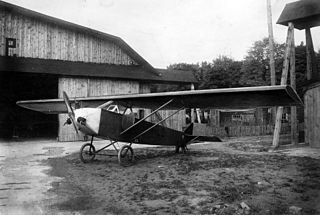
The Medwecki HL 2 was a Polish two seat lightplane flown in 1927. Handicapped by a low power, unreliable engine, its flying life lasted little more than a month.
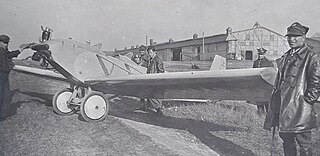
The Offierski O.2 was a one-off, two seat, low powered lightplane built in Poland on the late 1920s. It flew in 1928 but an old and unreliable engine prevented its development.
The Medwecki and Nowakowski M.N.3 or just M.N.3 was a low-powered, four seat, Polish aircraft flown in 1928. The sole example was modified into a more powerful two-seater which served aeroclubs until World War II.
The Silesia S-4 was a Polish, low-power parasol wing aircraft built in 1925. After an engine change and airframe modifications it became one of the Silesian Aeroclubs fleet. It was lost in a take-off accident in 1931 and was the last Silesia aircraft to fly.

The Działowski D.K.D.1 was the first powered aircraft designed by Stanislaw Działowski. It was a low-power high-wing monoplane with a cabin for one passenger. After attending an aviation exhibition in Warsaw in 1927 it was badly damaged when the engine failed as it left and it did not fly again.
The D.K.D.3 was a Polish, single seat, parasol-wing sports aircraft first flown in 1927. Only one was built but flew in demonstrations and in national competitions into the early 1930s.
The Działowski D.K.D.4 was a Polish, parasol-wing, sports two-seater built in 1928. One won the Second National Lightplane Contest, with another coming fifth.

The all-wood Kozłowski WK.1 Jutrzenka (Dawn) was a two-seat low wing monoplane designed and built in Poland over 1926-7.
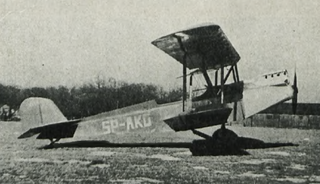
The Kozlowski WK.3 was a one-off Polish biplane trainer. It first flew in 1933 and was later re-engined, serving an aeroclub until the invasion of Poland.
The Grzmilas Orkan II was a Polish one-off, single-seat sports aircraft. It came second in the second National Lightplane Contest held soon after its first flight, with outstanding take-off and climb characteristics. Its designer and builder continued to use it until 1939.
The LKL IV and LKL V were a pair of very similar Polish parasol wing two-seaters, built in the early 1930s. They differed primarily in their engines.

The Sido S.1 was a Polish two seat, parasol wing trainer aircraft, first flown in 1930.
The Gabriel Śląsk (Silesia) was a Polish light aircraft designed and built by an amateur in the mid-1930s. After two flights the Polish authorities banned further development.













